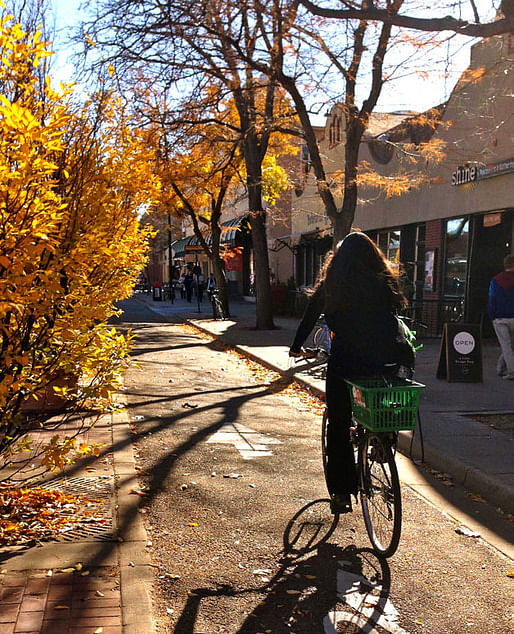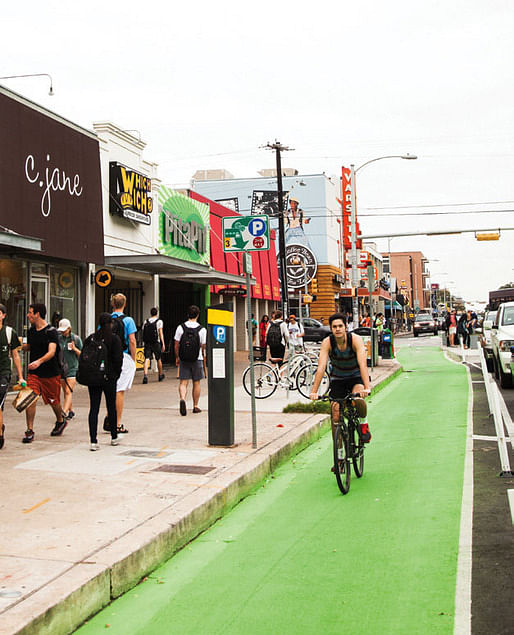
According to a recent report from PeopleForBikes and Alliance for Biking & Walking, protected city bike lanes can actually encourage local business success. As trends show workers moving into U.S. cities (rather than out into suburbs), and businesses catering to a younger workforce that relies less on cars, cycling infrastructure has becomes integral to strengthening local businesses and encouraging long-term economic growth for the entire city.
A lot of what delays cycling infrastructure is the presumption that it only benefits cyclists. It can be hard to justify to citizens who don't cycle that bike lanes and bike-share programs will benefit the city at large, and not just the "cyclist" demographic. But cities have begun to take notice of the positive change that cycling infrastructure can help bring to their local businesses, in very concrete ways.

The report focuses on statistics from cities with expanding networks of protected bike lanes: Austin, TX; San Francisco, CA; Portland, OR; Chicago, IL; and Washington, DC. Here are the main takeaways (you can read the full report here):
Denser populations need to do more with less, transit-wise.
Companies and cities are catering to a younger workforce.

Biking is good for you and can decrease insurance costs.
Protected bike lanes reduce traffic congestion.
Cyclists are great for retailers.

The report also cites higher property value for real estate adjacent to protected bike lanes, and increases in bike traffic once a city made a preexisting bike lane into a protected one.
Cycling infrastructure can encourage businesses while limiting expansion, and manage congestion while increasing efficiency. While there are many cities outside of the U.S. with very refined biking cultures and infrastructures, the U.S. stands to benefit most not from directly imitating those models, but by understanding which successful elements it can use to develop its own cycling culture, bespoke to its developing cities.
About PeopleForBikes:
PeopleForBikes is the leading national bike movement, uniting millions of individuals, thousands of businesses, and hundreds of communities to improve bicycling in the U.S. The PeopleForBikes Green Lane Project works closely with cities to build better bike lanes to create low-stress streets. Join the movement at PeopleForBikes.org.
About Alliance for Biking and Walking:
Alliance for Biking & Walking is the North American coalition of over 200 state and local bicycling and walking advocacy organizations. The Alliance creates, strengthens and unites leaders who are transforming communities into great places to bike and walk.
2 Comments
Nice to see more studies coming out that show a positive relationship between segregated bike infrastructure and local economies.
Complete Streets are complete or not. Cyclists, walkers and transit users may not put much profit in corporate pockets but is that what transportation is about?
Block this user
Are you sure you want to block this user and hide all related comments throughout the site?
Archinect
This is your first comment on Archinect. Your comment will be visible once approved.